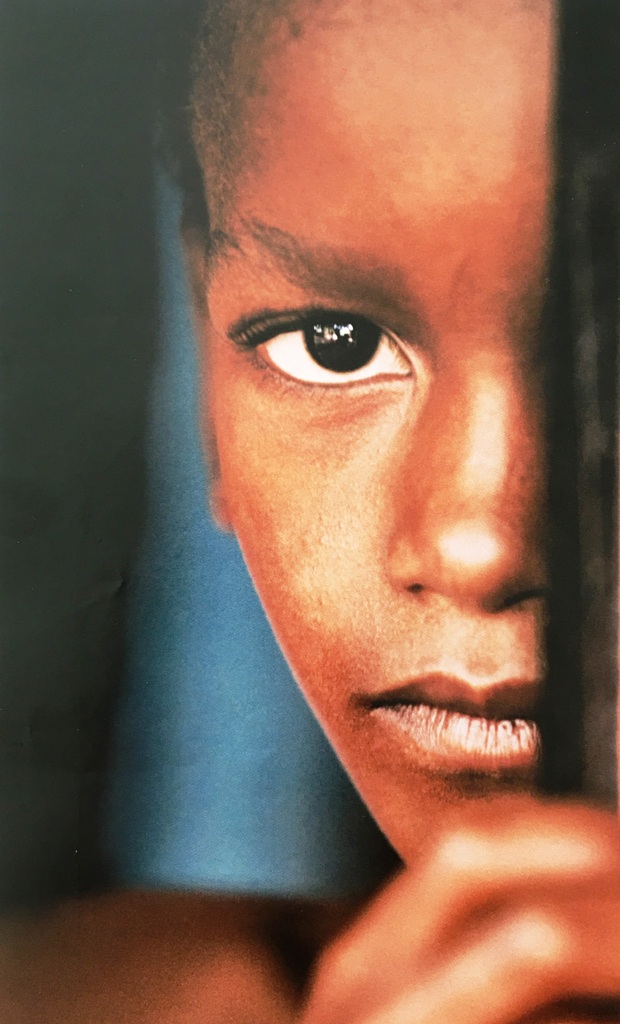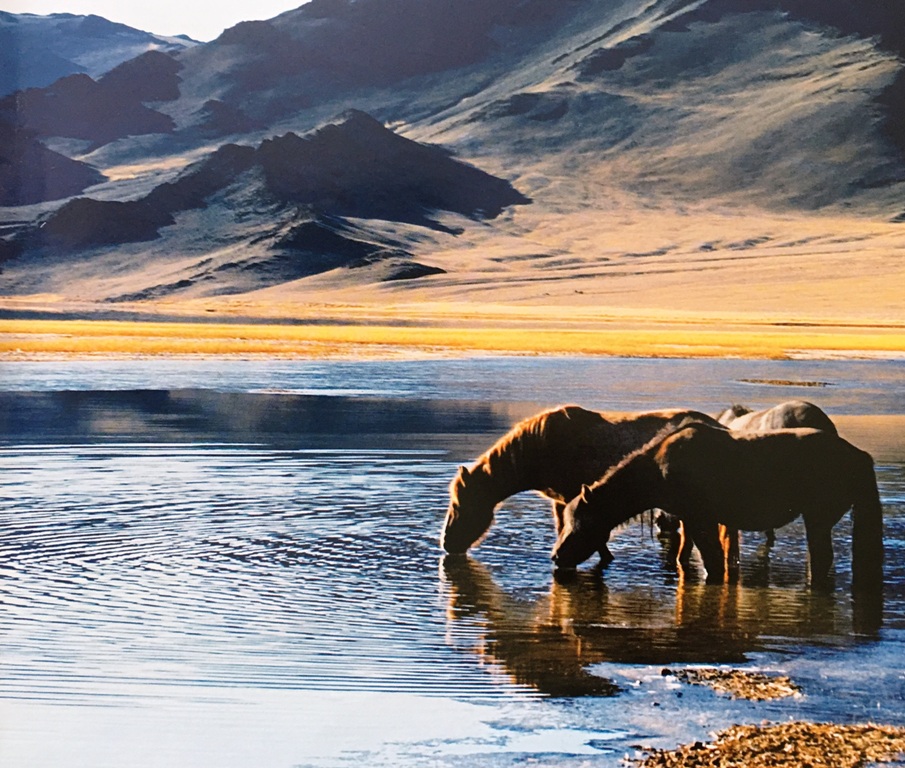Desert travel from 5 continents

Scorching sun, endless sands …
The footprints you leave behind and disappear at every step you take.
Expeditions from different parts of the world to different deserts …
White Desert
The light color sands of the White Desert in Egypt become whiter with the changing daylight towards the evening and take on a glacial appearance.
The White Desert, which is one of the places that everyone should not return without visiting Egypt, is quite assertive in enchanting you with its different color and appearance. Desert sands, whose color is close to white compared to other deserts, are light in color, getting more white with the changing daylight towards the evening and acquire a glacial appearance. In the desert, where tourists prefer to wait until the evening hours to come and see this color change, as well as different rock formations, white large rings resembling the appearance of cracked soil, large rocks settled on small rocks that seem to fall, fascinate those who see.
We recommend that you choose tours that meet these services, as there is no place for eating and accommodation in the desert. Otherwise it can be very costly. Trips to the desert are organized from Bahariyya or Farafra. If you want, you can take your food with you and go to the desert by bus. While the Egyptian Deserts, which have different beauties, satisfy their visitors in every way, the White Desert has already managed to rank among the most visited tourism destinations in Egypt.
Kalahari Desert
The desert, which plays with the red with the sunset, almost enchants its visitors with its story dating back 70 million years and its image that integrates with this story.
With its beauty and atmosphere that looks like an endless sea, its culture and its story dating back to prehistoric times, the Kalahari encompasses almost the whole of Botswana. Namibia in the west continues to Angola, Zimbabwe and Zambia in the north.
The red colored plain on the African Plateau gives you the feeling of looking at a wavy sea. The desert, which plays with the red with the sunset, almost enchants its visitors with its story dating back 70 million years and its image that integrates with this story. Home to a tribe called “San”, the desert surprises everyone with its interesting and difficult living conditions. If you happen to pass here, you can visit the San people, whose genes reach back to the first human, and learn about their lives. The people, who store the water they obtain from dried river beds and salt pools or the stomachs of antelopes they hunt, in ostrich eggs, obtain most of their water need from abundant watery Tsamma melon. Another method of obtaining water from the locals is to draw the water accumulated in the tree and rock cavities with reeds after the rare rains. The most important feature that distinguishes the Kalahari Desert from other deserts is that despite its desert climate, life continues thanks to the alluviums brought by the rivers at the time. There is also abundant alluvium in the desert sands.

Arabian Desert
There are many activities you can do in the desert, from sand skiing, camel ride, barbecue pleasure on the sand, to jeep safari. Surrounded by the Red Sea and the Nile River and leaning against the cool waters of the Mediterranean, the hot desert sands are perhaps the richest place in the Arabian Peninsula in terms of natural resources.
The Arabian Desert, also known as the Great Sandy Desert of Arabian Peninsula, is home to one of the world’s trendiest settlements and trade destinations, Dubai. If your way falls here, you should not end your trip without visiting Dubai.
There are many activities you can do in the desert, from sand skiing, camel ride, barbecue pleasure on the sand, to jeep safari. Also, visits to Bedouin villages can be one of the most interesting moments of your desert trek. Bedouins, who live nomadic life in tents between the Middle East and North Africa, can easily change places and adapt very quickly. Residents prefer villages and towns along the Red Sea. It is seen that the people whose main sources of income are dealing with tourism, agriculture and fishing in restricted areas continue their lives in very difficult conditions. The Arabian Desert, where the summer season is at an average temperature of 40-50 ° C, while the winter is at 5-15 ° C, it surprises its visitors with the temperature difference between day and night.
Sahara desert
The Sahara almost divides Africa into two with an area of 4800 kilometers from east to west.
Surrounded by the Atlantic Ocean in the west, the Red Sea and Egypt in the east, the Atlas Mountains and the Mediterranean in the north, Sudan and the Niger River in the south, the Sahara has already won the title of being the world’s largest desert. The Sahara almost divides Africa into two with an area of 4800 kilometers from east to west. In the desert, which is 25% covered with sand, although the occasional pyramid-like images and mounds formed of various sizes are the focus of attention of researchers from all over the world, many questions asked about the shape of the sand have not been found. With 2.5 million people, the Sahara Desert has the most difficult climate and earth conditions to live on. Many archaeologists have proven with their studies in the Sahara that life here began in ancient times and the desert conditions became more severe with the last glacial period. If you are interested in the archeology of the desert, you should definitely visit the archeology museums in the city.
Sahara, which attracts hundreds of tourists from all over the world, despite being the hottest desert on earth, can help you cool off a little bit with its oasis. As a result of evaporation with hot air, the water of the lake is quite salty. We recommend that you take a shower as soon as possible after getting out of the water. Do not be surprised if you encounter people who have already accepted to live in these difficult conditions while traveling in the desert. Tribes living in groups, with their camels and tents, fight for survival in this vast pile of sand. Most of the desert’s water needs are provided by the Nile River, and other rivers join the Mediterranean. Get ready to have a very different experience by doing a safari on the sand with its sea-like view. While the winter season passes around 13 ° C on average, the summer season is felt around the highest 58 ° C. For this reason, the months when you can enjoy the desert best are, of course, February and March.

Thar Desert
The Thar Desert, lively with the Pushkar Fair reflecting the Rajasthan culture, hosts many extraordinary activities.
The Thar Desert, spread between the Aravalli Mountains in the east and the Indus in the west in northwest India and Southeast Pakistan, hosts a world-famous festival in September-October. Moving with the Pushkar Fair, which reflects the Rajasthan culture, the Thar Desert hosts many extraordinary activities, from trade to entertainment, from animal trading to camel rides, from camel races to camel beauty contests. With the “Laadoooonth” competition, which tests how much the camel can carry, decorated camels showcase their skills in front of the jury. Many activities are waiting for your participation, from the ferris wheel to the colorful balloons circulating over the desert, in the fairground, where the women in their colorful saris and the men’s turbans give you a riot of colors. This traditional Pushkar Fair, which has defied years, is an important activity that reinforces the importance of camel and desert life. The desert, which is gloomy and empty during the rest of the year, opens its doors to 200 thousand pilgrims, farmers and camel owners every year with the festival. Although the most suitable period of visit is February, we recommend that you go in October-November so that you do not miss this festival.
Gobi Desert
The Gobi Desert, which consists of pebble and sandy areas, has the title of being the 5th largest Desert in the world.
The Gobi Desert, one of the most unique places in the world, is a vast desert in Central Asia, which includes regions near Kansu provinces of China, south of the Mongolian Republic. The Gobi Desert, which was thought to be covered by the sea in prehistoric times, is the place where prehistoric living remains and dinosaur fossils are seen most today. The Gobi Desert surrounded by rocky mountain ranges is 1600 kilometers long; its width is 485-960 kilometers. Although the desert, where severe climate transitions are seen, is considered as a place where life does not exist, it is considered as one of the 4 largest Biosphere Reserves in the world, designed by the United Nations since 1971, with 2 kinds of mammals and 240 bird species. has been. If you happen to be on your way here, our suggestion to you is not to return without visiting Gurvan Saikhan National Park, which is home to oases, salt pools, cliff cliffs, narrow hills and beautiful canyons. Surprising its visitors with the ice formed in its canyons during the hottest times of summer, Gurvan Saikhan fascinates those who see it with the plants and animals it hosts within its borders. In addition to Gurvan Saikhan, we strongly recommend you to visit Bayanzag, which is home to dinosaur fossils and the first fossilized dinosaur eggs, the American Museum of Natural History founded on behalf of the famous scientist Andrews, and Khongoriin Els Kumul areas where you will travel with a camel.

Desert covered with lakes
Lençóis, which looks quite different from other deserts with the rain water accumulated between the dunes, is one of the most amazing places in the world. Lençóis Maranhenses (Brazil) Isn’t it so interesting to find “dips” in a country with the world’s largest rainforests and fresh water? Lençóis Maranhenses National Park, located in the city of Maranhão on the northern coast of Brazil, is covered with white dunes and deep blue lakes. The sand dunes that cover 50 kilometers of the coastline look like a white sheet with its wonderful scenery. It receives 300 times more rainfall than the Sahara Desert. The lakes formed during the drought period evaporate and the area remains completely dry. After the rainy season, the lakes are filled with various fish, turtles and clam species. The hypothesis explaining this phenomenon One of them is that fish and crab eggs stay alive in the sand and come alive with the rain.
Antarctica
Antarctica, the driest and wettest place in the world, is a place of outliers. People cannot stay there for a whole year because it is extremely cold. In 1983, scientists recorded that the temperature dropped to -53 C. This is both the driest and the wetest place in the world. It is the most wetland because of melting glaciers, not precipitation.
Black Desert
Black stone covered desert Black Desert, located 100 kilometers northeast of the White Desert in Egypt, is a region covered with volcanic shaped mountains and small black stones. Although the stones lying on the orange-brown ground are not as black as most people hope, they manage to attract everyone with their different appearance. If you come here with a dream of a black desert, especially after visiting the White Desert, you will be disappointed.

Salar de Uyuni
One of the iconic images of Bolivia, the world’s largest salt desert, is the huge salt desert in the middle of Antiplano. It creates a mirror effect in the desert sky, which reflects the sun’s sparkles. There are several lakes in the desert with different colors formed from mineral deposits. About 40,000 years ago this area was one of the sections of Lake Minchin. When the lake dried up, two lakes, Poopó Lake and Uru Uru Lake, which have survived until today; There are two large salt deserts left, Salar de Coipasa and Uyuni.
Namib Desert
The Namib Desert in South Africa is as impressive as the Sahara Desert. Part of the Namib-Naukluft National Park, the desert reaches northwest Angola. Namib has some of the world’s tallest dunes like Sossusvlei, some 300 meters high; it is also the only desert in the world that hosts elephants. The area called Skeleton Coast, located on the shore of the Atlantic Ocean, was formed as a result of the dragging of the remains created by marine accidents and pirate activities to this region and accumulating here for many years.
Simpson Desert
Red Sand Desert Also known as The Big Red in Australia, the sands of Simpson Desert are red. The desert contains the longest parallel sand dunes in the world. The dunes are fixed in location, they are held by the vegetation. Those in the west are around 3 meters tall while those in the east are around 30 meters tall. Nappanerica or popularly known as “Big Red” hill is 40 meters high.
Atacama Desert
In Chile, Atamaca Desert, located north of the 29th parallel, covers most of the Chilean territory. Located on the coast between Africa and the Antofagasta region, this region is included in the Guinness Book of Records as “the driest place in the world”.

Taklamakan Desert
Taklamakan is one of the largest sandy deserts in the world. Covering 270,000 kilometers of the Agricultural Basin, the desert is 1,000 kilometers long and 400 kilometers wide. The two branches of the Silk Road cross the northern and southern ends of the desert so that travelers do not have difficulty crossing over the barren lands. In 2008, China’s largest desert witnessed the lowest temperatures and snowiest times after 11 days of snowfall. The falling snow covered 337,600 kilometers, so for the first time the entire desert was under white cover.